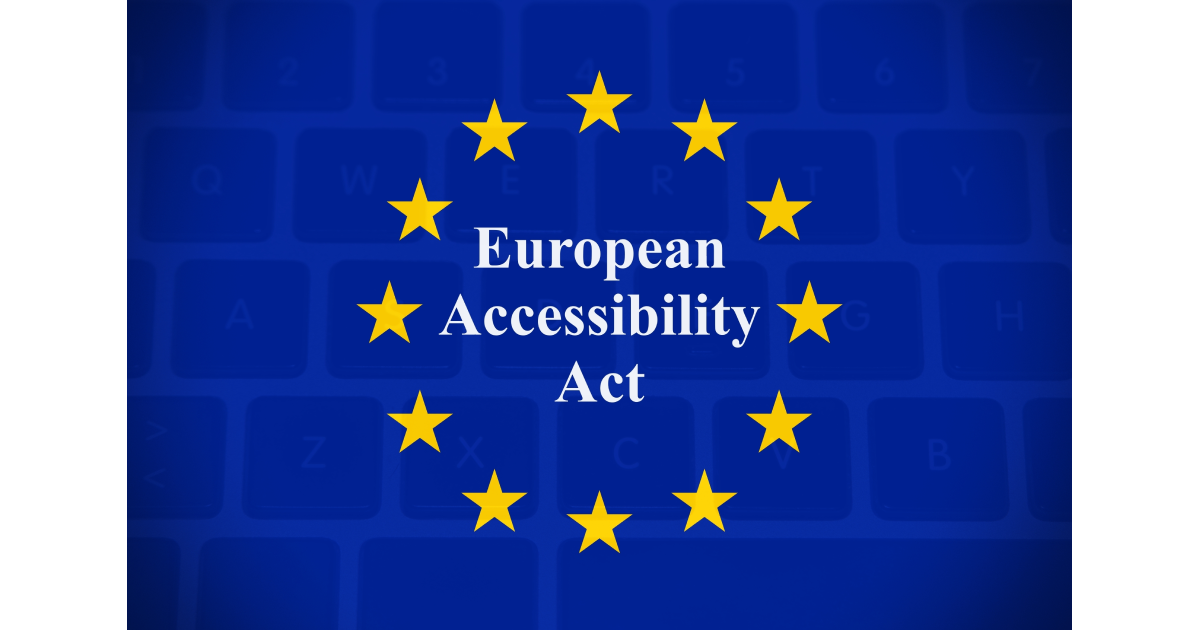With the June 28, 2025, deadline looming, this FAQ explains how the European Accessibility Act affects businesses, detailing its scope, penalties, and practical compliance steps.
June 28 is the deadline! If your company operates in more than one EU country, now is the time to assess your risk and readiness. Book a meeting with UsableNet to get expert support ahead of enforcement.
The European Accessibility Act (EAA), formally known as Directive (EU) 2019/882, imposes new accessibility requirements on digital products and services sold in the EU. As the June 28, 2025, compliance deadline approaches, companies operating across Europe—especially in the tech, e-commerce, banking, and communications sectors—need to understand how these rules will be enforced and what risks non-compliance entails.
To help you prepare, we’ve compiled clear answers to the most common legal and practical questions we've received in the last couple of weeks surrounding the EAA and its implementation in each EU member state.
What is the EAA, and how does it relate to WCAG?
The European Accessibility Act is a pan-EU law that requires certain digital goods and services to be accessible to persons with disabilities. While the EAA doesn’t mandate WCAG by name, most EU member states are aligning their national laws with WCAG 2.1 AA or the broader EN 301 549 standard, which references WCAG.
Does the EAA apply to my company?
The EAA applies if you:
- Sell digital products (e.g., ATMs, smartphones, e-readers)
- Provide digital services (e.g., ecommerce platforms, banking, ticketing, transport apps)
- Operate within the EU or provide services to EU consumers
Microenterprises (fewer than 10 employees and under €2 million turnover) are exempt. All others must comply. Learn more about which businesses are in scope.
What happens if we’re not compliant by the deadline?
Non-compliance risks include:
- Investigations by your country’s enforcement authority
- Fines, which vary by member state
- Public exposure on non-conformance registers
- Loss of contracts, especially in public procurement
Each member state defines its penalties, but enforcement is mandatory across the EU.
|
Country |
Maximum administrative fine (EUR) |
|
Germany |
500 000 |
|
Austria |
200 000 |
|
France |
250 000 |
|
Spain |
600,000 (plus higher for repeat infractions) |
|
Ireland |
200 000 (plus possible director liability) |
|
Italy |
150 000 |
|
Denmark |
10 000+ (tier‑1; higher for repeat breaches) |
|
Finland |
10 000+ (tier‑1; higher for repeat breaches) |
Amounts shown are statutory maxima for first‑tier infractions. Recurring or severe breaches may result in higher sanctions.
How will EAA enforcement work?
Enforcement is handled at the national level. Each EU country designates one or more National Enforcement Authorities (NEAs). They are responsible for:
- Receiving and investigating complaints
- Conducting audits
- Ordering remediation
- Imposing sanctions or referring to a court
How long do we have to fix an accessibility issue after a complaint?
It depends on the country, but most allow:
- 30–90 days to respond to an initial inquiry
- 3–6 months to complete remediation
Can we be fined in multiple countries for the same issue?
Yes. If you provide services or sell products in multiple EU countries, you may face parallel investigations and fines in each jurisdiction. Coordination is encouraged—but not guaranteed.
Example: A cloud platform with users in Germany and France could be investigated separately by each country’s NEA.
How do we prove that we’re working on compliance?
Provide the NEA with:
- An accessibility audit report
- A remediation plan with clear timelines
- Logs or screenshots of progress
- Staff training records and budgets
- An updated accessibility statement
This documentation can help delay or avoid enforcement actions.
What is a "declaration of conformity" under the EAA?
For digital products, a declaration of conformity is a signed legal statement that the product meets EAA requirements. See the official EU template here: EUR-Lex Annex III
What are the best steps to take now?
- Audit your sites, apps, and documents for WCAG 2.1 AA conformance.
- Publish an accessibility statement on every applicable interface (here’s why that’s essential)
- Train your staff on accessibility and EU-specific legal obligations
- Build a remediation roadmap with budget and timelines
- Document everything—you may need to show your progress
Companies that take these steps proactively are far less likely to face penalties and better positioned to serve all users.
Need More Help?
As your team prepares for the June 2025 deadline, these resources can support your next steps:
🎥 Watch the EAA webinar series led by UsableNet accessibility experts—with legal insights from Reed Smith LLP in the first session—this series breaks down who’s in scope, what EN 301 549 requires, and how to build a lasting accessibility strategy.
🧩 EN 301 549 vs. WCAG: What’s the Difference?
This brief blog explains how the EAA standard builds upon WCAG and what that means for your website, apps, and documents.
✅ Visit the EAA Resource Hub Checklists, tools, and blog posts—organized in one place to make your compliance journey easier.
How UsableNet Can Support EAA Compliance
At UsableNet, we provide solutions to help businesses comply with EAA and EN 301 549 standards—whether you're just getting started or need full-service support.
UsableNet Assistive is a fully managed service designed to ensure EAA compliance with minimal effort from your internal team. Our accessibility experts handle remediation and ongoing monitoring, aligning your websites and apps with WCAG and EN 301 549 standards. By proactively maintaining accessibility, we help you reduce compliance risk while delivering a seamless experience for EU customers.
Accessibility as a Service (AaaS) - Our AaaS program provides the guidance, training, and tools your team needs to build accessibility into day-to-day workflows. This approach supports long-term EAA compliance through usability testing by people with disabilities, expert support, and continuous adaptation as EU regulations evolve.
AQA Accessibility Testing Platform helps your team identify, track, and resolve accessibility issues with real-time insights. Our automated testing platform seamlessly integrates into existing workflows to assess conformance with EN 301 549, streamlining compliance and enhancing usability for all customers who require assistance in preparing for the June 2025 deadline.







